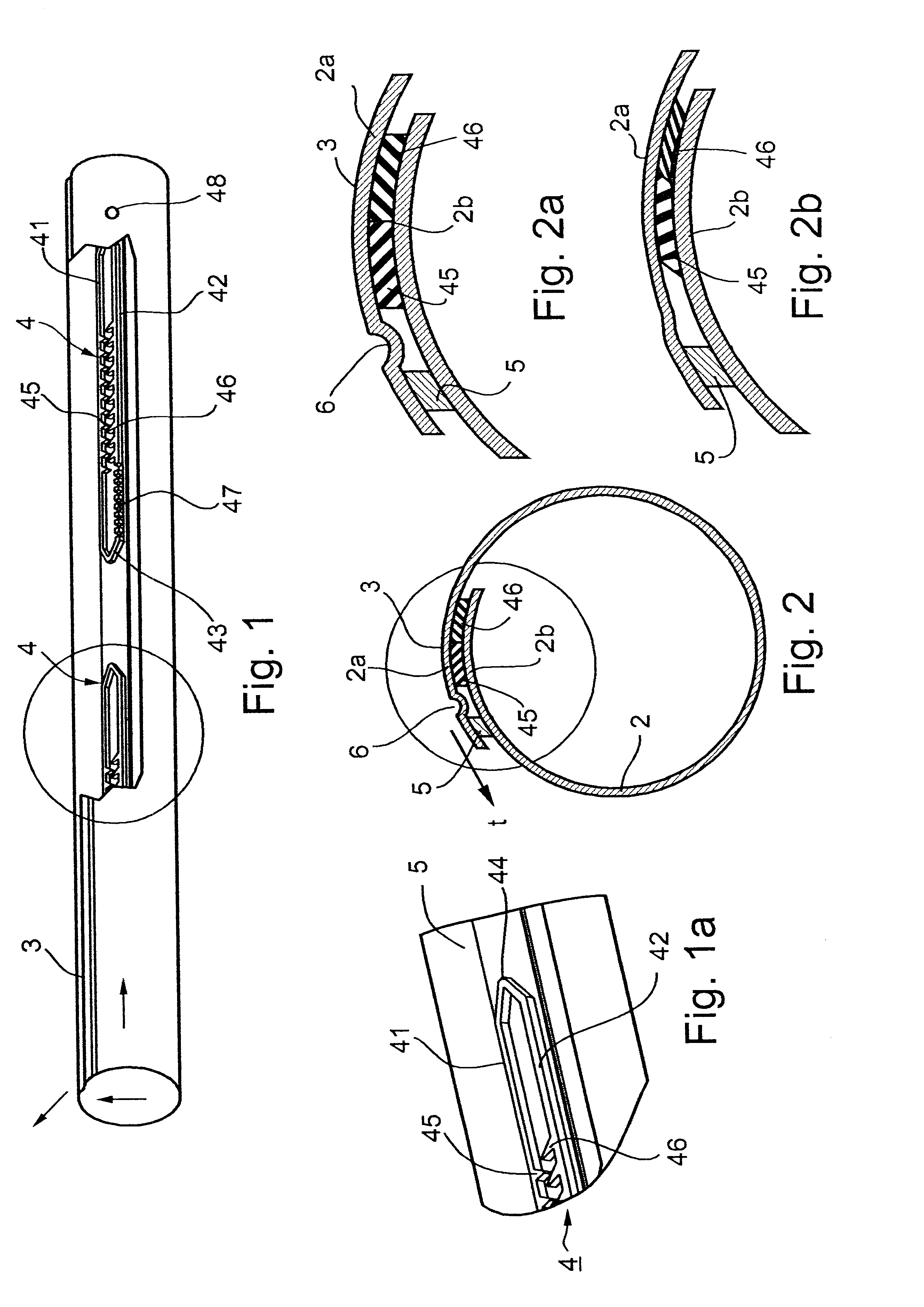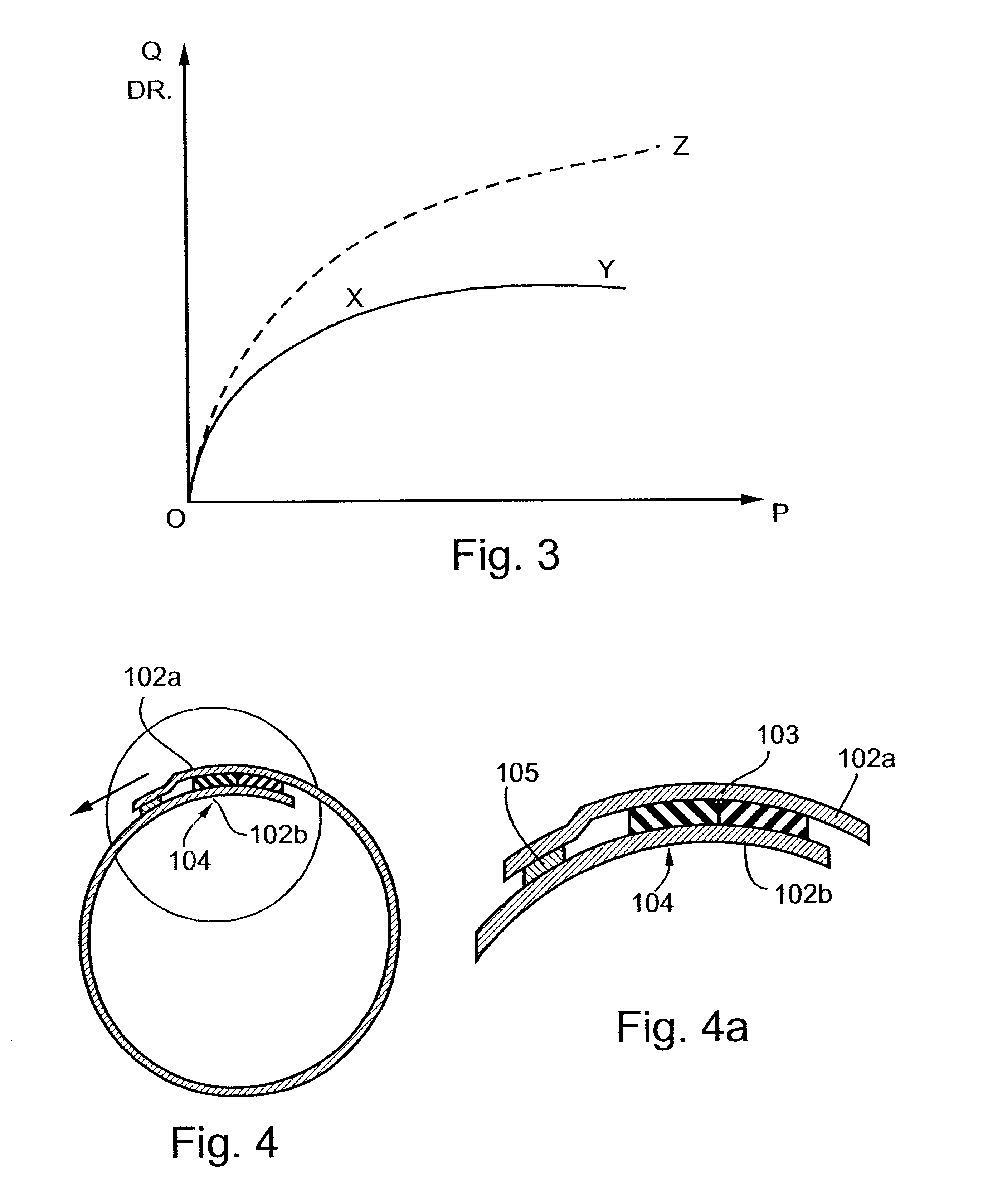Drip irrigation hose and method of making same
- Summary
- Abstract
- Description
- Claims
- Application Information
AI Technical Summary
Benefits of technology
Problems solved by technology
Method used
Image
Examples
Embodiment Construction
With reference to FIGS. 1 and 2, there is illustrated a drip irrigation hose comprising a sheet of 2 of thin, flexible plastic material having opposed outer edge portions 2a, 2b which are overlapped and bonded together to form a seam 3 extending longitudinally of the so-produced hose for conducting pressurized water therethrough. A plurality of emitter elements, each generally designated 4, are bonded between the overlapping portions 2a, 2b of the sheet 2 at longitudinally-spaced locations along the seam 3, and define a plurality of restricted flow passageways for discharging water from outlets in the seamed hose at a slow rate.
The overlapping portions 2a, 2b of the flexible sheet are bonded together both by the emitter elements 4, and by a continuous, longitudinally-extending rib 5 extending along the outer edge of the outer overlapping portion 2a. As shown particularly in FIGS. 2 and 2a, the outer overlapping portion 2a is formed with an inwardly-extending slack 6 between the rib ...
PUM
 Login to View More
Login to View More Abstract
Description
Claims
Application Information
 Login to View More
Login to View More - R&D
- Intellectual Property
- Life Sciences
- Materials
- Tech Scout
- Unparalleled Data Quality
- Higher Quality Content
- 60% Fewer Hallucinations
Browse by: Latest US Patents, China's latest patents, Technical Efficacy Thesaurus, Application Domain, Technology Topic, Popular Technical Reports.
© 2025 PatSnap. All rights reserved.Legal|Privacy policy|Modern Slavery Act Transparency Statement|Sitemap|About US| Contact US: help@patsnap.com



